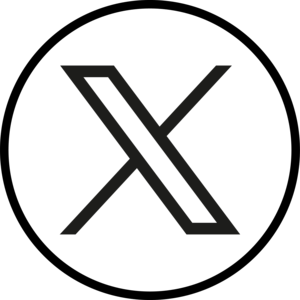What is a SOAP Note Checklist?
The SOAP note is a documentation method used in the medical field. Doctors, nurses, therapists, athletic trainers, and counselors use these types of notes to record and assess a patient’s condition. The acronym “SOAP” stands for Subjective, Objective, Assessment, Plan. This type of recording is a way to structure the medical history sheet or medical record.
The SOAP note was developed nearly 50 years ago by Dr. Lawrence Weed for the problem-oriented medical record (POMR). The purpose was to allow physicians to address patients with complex disease processes involving multiple problems in a highly organized manner. Today, SOAP notes are also used as a communication tool between interdisciplinary health care providers to document a patient’s progress.
Documenting SOAP notes maps well to a checklist. This ensures that all information about the patient and their clinical picture is included. Medical staff also use SOAP notes to collect and share patient information over a period of time.
This article addresses the issues:
1. The 4 main components of a SOAP Note checklist
2. Why the SOAP Note process should be used
3. How SOAP Notes are best used in a checklist
5. Technology for digital SOAP Notes checklist

The 4 main parts of a SOAP Note checklist
A SOAP Note form consists of four main parts designed to improve assessment and standardize documentation:
Subjective: Patient’s subjective complaints – what they tell you. (Anamnesis)
Objective: Objective findings of the physical examination and laboratory and instrumental diagnostic findings – what you see.
Assessment: analysis of symptoms, medical history, and diagnoses – what do you think is going on?
Plan: planning further diagnostic measures and therapies – what you are going to do about it.
Why SOAP notes are important
One of the most important reasons why standardized note formats like SOAP notes need to be adopted is their ability to avoid misunderstandings. When two facilities write their notes in the same format, it no longer matters that a patient is being cared for by two providers.
Both sides can view the notes on the patient and know exactly where to find the information they are looking for. This reduces misunderstandings that can lead to incorrect treatments or malpractice, and also helps reduce the burden on medical staff.
With easier-to-read notes and more comprehensive, reliable information, there is more time to actually treat the patient. SOAP notes eliminate the need for lengthy inquiries and gathering of all the medical history information.
SOAP format: This is how you build up the checklist
SOAP notes with a template, enables medical staff to provide clear and precise documentation of patient information. This way of recording helps those involved to get a precise overview and a better understanding of the patient’s concerns and needs.
Below you will find a short guide on how to work effectively with a SOAP note template:
Subjective: What the patient tells you.
This section in the SOAP note checklist refers to all information that is communicated orally by the patient. Write down the patient’s complete statement and insert quotations. The patient’s medical history, surgical history, and social history should also be noted as it may help to identify or narrow down the possible causes.
Objective: What you see.
This section consists of observations made by medical professionals. Study the patient’s general appearance and also take into account vital signs (e.g. temperature, blood pressure, etc.). If specific tests have been performed, the results should be reported.
Assessment: What do you think is going on?
This section describes the diagnosis or condition of the patient. The evaluation is based on the results given in the subjective and objective parts. This section also includes ordered diagnostic tests (e.g. x-rays, blood count) and referral to other specialists.
Planning: What you’re gonna do about it.
This section of the SOAP note template deals with the patient’s illness identified in the previous section. A treatment plan is worked out, specifying the required medication, therapies and operations. This section is also used for patient education such as lifestyle changes (e.g. dietary restrictions, no extreme sports, etc.). Additional tests and follow-up consultations are also specified.
How to Fill Out a Nursing SOAP Note?
1. Subjective Data
This section in the SOAP note checklist refers to all information that is communicated orally by the patient. Write down the patient’s complete statement and insert quotations. The patient’s medical history, surgical history, and social history should also be noted as it may help to identify or narrow down the possible causes. It can be written down as follows:
Chief Complaint:
The patient reports fatigue, blurred vision, and dizziness. “For two weeks now I’ve been constantly tired. I can’t get out of bed in the morning. I’m exhausted all the time which makes going to work—something that I used to love—feel like a chore. I can’t see right, and I feel dizzy when I stand up.”
History of Present Illness:
One month prior to current hospitalization he was treated with fluorouracil for adenocarcinoma of the colon.
History of Past Illness:
The patient has a history of epilepsy but has been seizure-free now for five years.
Social History: (does the patient smoke/ do enough physical activities)
The patient used to be an avid cyclist but hasn’t practiced the sport since a knee injury that occurred during a soccer match two years ago.
Family History:
The patient’s father died of a heart attack three years ago without any previous diagnosis. The autopsy revealed he was suffering from coronary artery disease. His mother has been diagnosed with type 1 diabetes. The patient’s grandmother died of a pulmonary embolism at the age of 38.
Review of Systems:
Jaundice of the eyes suggests a worsening liver condition. Swollen lymph nodes in the neck may be caused by a secondary infection.
Is the patient taking any medications:
Yes No
The patient takes 300mg of phenytoin daily
Does the patient have any allergies:
Yes No N/A
2. Objective Data
This section consists of observations made by medical professionals. Study the patient’s general appearance and also take into account vital signs (e.g. temperature, blood pressure, etc.). If specific tests have been performed, the results should be reported. Using the previous example, we can describe the objective section in the SOAP note template as follows:
Age:
28
Height (in inches):
5’9
Weight (in lbs):
195.7
BMI:
28.8
Gender:
Male Female
General Appearance:
The patient has developed a skin rash and appears lethargic. He exhibits anxiety and depression over worsening symptoms.
Blood Pressure:
130/80
Body Temperature:
102.2
Any different appearance regarding eyes, ears, nose, throat?
The patient displays a red throat with white spots and jaundice of the eyes.
Respiratory:
15 breaths per minute
Cardiovascular:
80 bpm
Integument/ Lymphatic Inspection:
The patient exhibits signs of lymphadenopathy
Laboratory Results:
CA-125 test confirmed the presence of protein. The broad thyroid panel came back normal. Vitamin levels are normal. Elevated levels of L-lactate dehydrogenase were detected.
3. Assessment
This section describes the diagnosis or condition of the patient. The evaluation is based on the results given in the subjective and objective parts. This section also includes ordered diagnostic tests (e.g. x-rays, blood count) and referral to other specialists. With the example chosen, the assessment would look like this:
General Observations:
The stomach is swollen and tender to the touch. The patient’s weight is down 15 pounds from the last check-up one month ago. The concurrent chemotherapy may have affected liver function. Because of the nonlinear kinetics of phenytoin, plasma concentrations increase rapidly with saturated hepatic metabolism.
Differential Diagnosis:
Adenocarcinoma of the liver and liver failure. The patient should be scheduled to get an MRI to make sure cancer hasn’t metastasized to the lymph nodes.
4. Plan
This section of the SOAP note template deals with the patient’s illness identified in the previous section. A treatment plan is worked out, specifying the required medication, therapies, and operations. This section is also used for patient education such as lifestyle changes (e.g. dietary restrictions, no extreme sports, etc.). Additional tests and follow-up consultations are also specified. With the selected example, the following plan can be written as SOAP notes:
Any other notes:
The phenytoin should be temporarily discontinued. Every other day the plasma concentration should be measured. Then therapy can be continued with a lower dose of phenytoin. The dose is determined based on the measured plasma concentration and the individual pharmacokinetic parameters calculated from it.
Because the patient has been seizure-free for five years, a phenytoin discontinuation trial could also be performed.
Referral to a psychologist may be beneficial to improve a patient’s depressed and anxious mood regarding his worsening condition.
5. Completion
Nurse’s name and signature:
John Hancock

This is how you use Lumiform for your SOAP documentation
Medical staff can use the Lumiform tool to digitally fill out their SOAP note template. This dramatically improves the quality and continuity of patient care by providing the following benefits of a digital solution:
- Write SOAP notes in digital format, update them easily over and over again, and share them with other team members.
- Get an overview of how the disease pattern is developing.
- The very simple operability offers no room for error for medical personnel. The app offers less complexity in documenting or filling out checklists than messy paper or excel lists.
- Reports are created automatically – this saves the complete postprocessing.
- Continuous improvement of quality and safety: With the flexible checklist toolkit you can constantly optimize internal tests and processes.
- SOAP documentation is completed, depending on the application, approximately 30%-50% faster.
- Easy digital signing for fast verification.
To help you get started with a digital SOAP note checklist, we have selected the best templates you can download free of charge and customize according to your needs. Our simple form construction kit also offers you the possibility to quickly and easily create your own templates for your SOAP notes.
Try Lumiform for free


